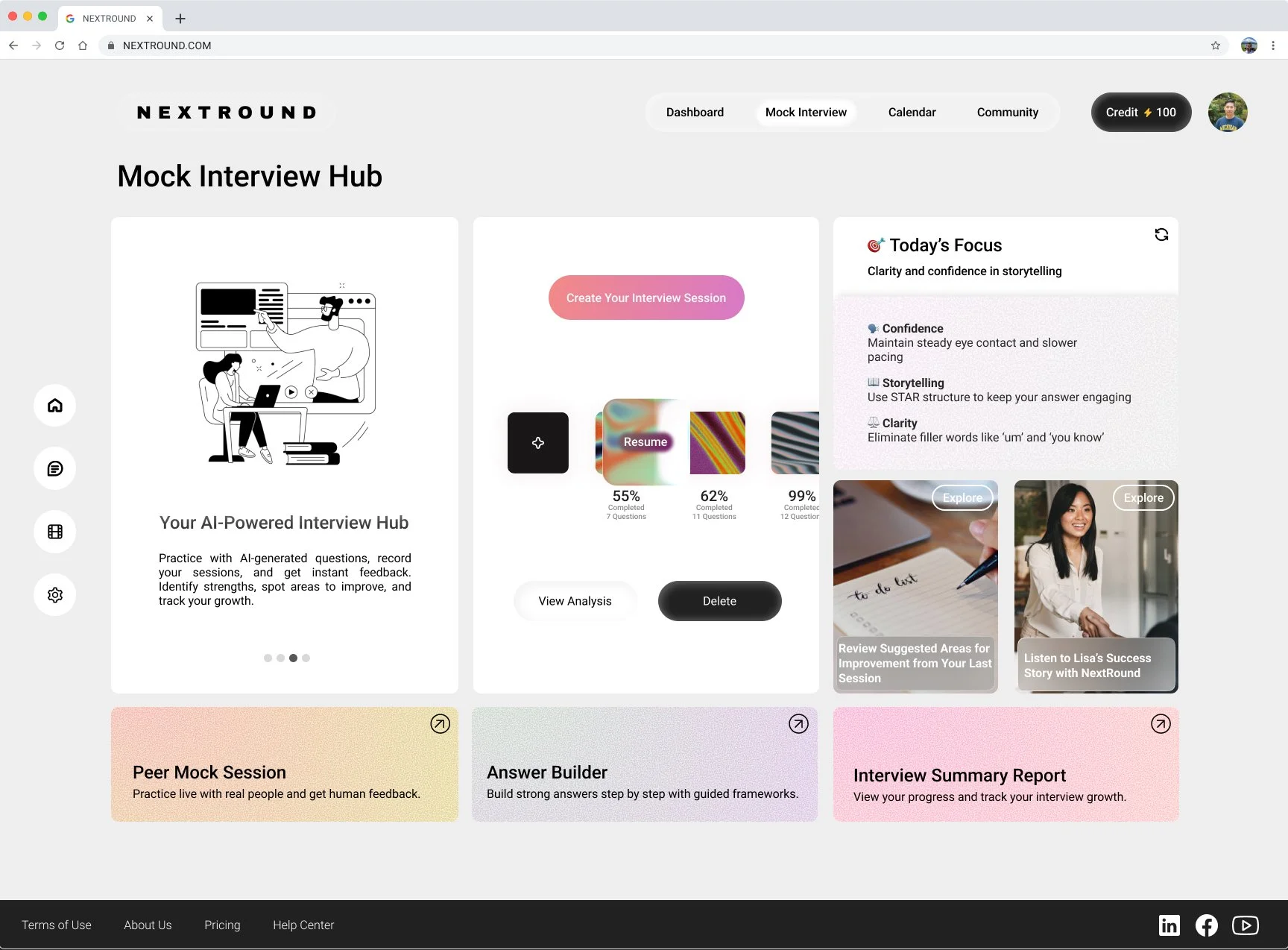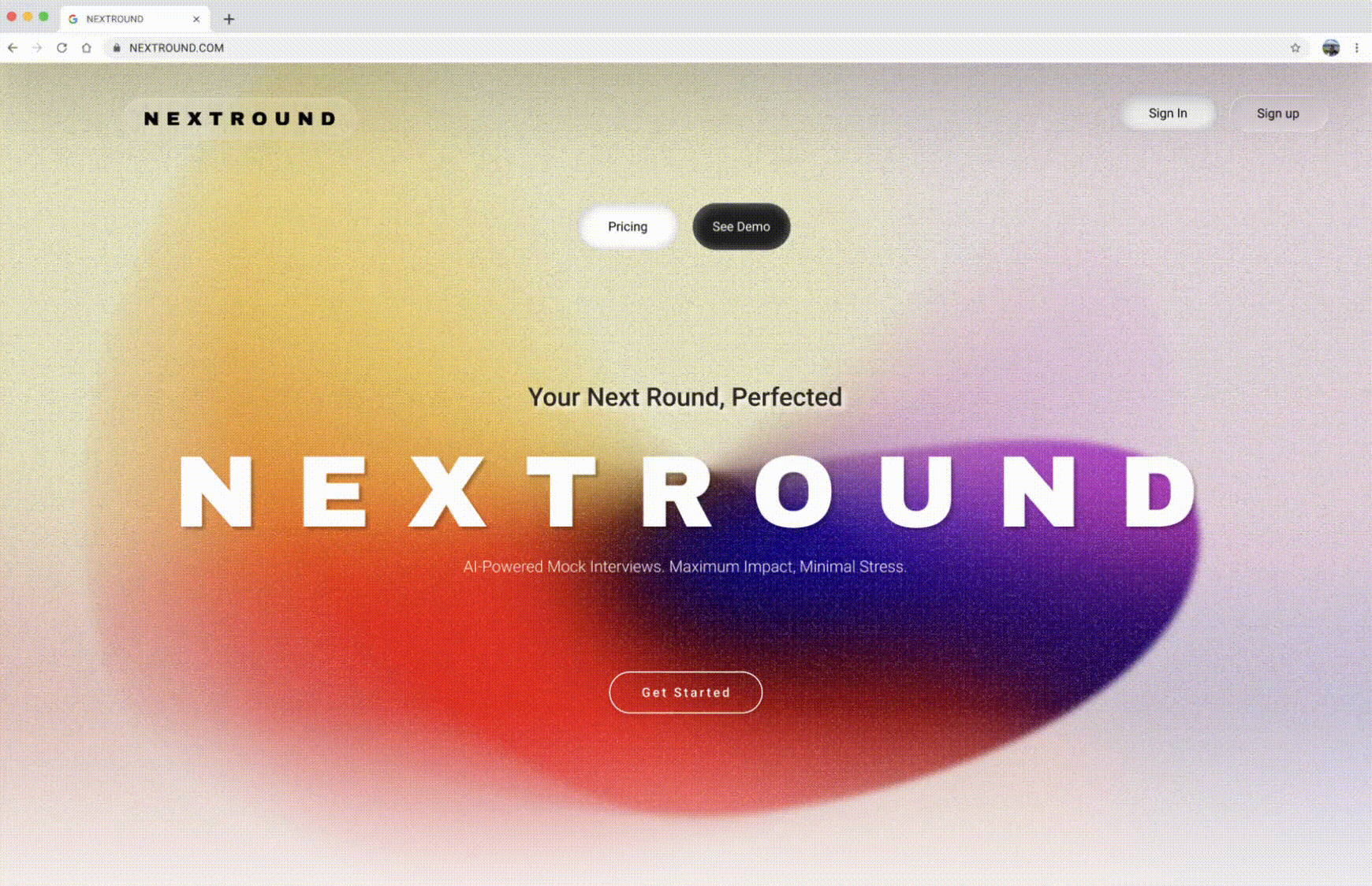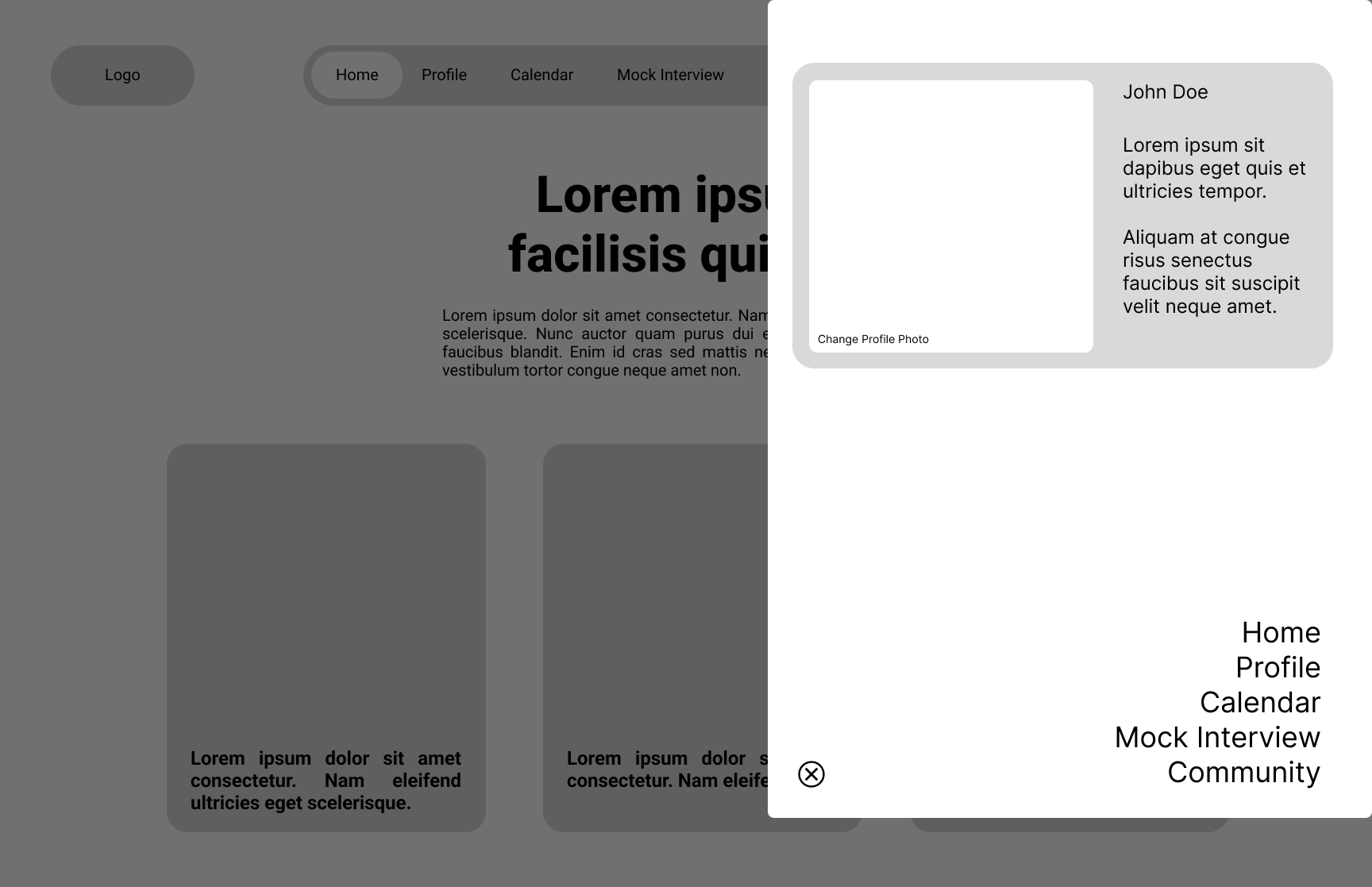AI-guided prep for real-world interviews — get ready for your NextRound with confidence.”
Project
Case Study
Timeline
Aug 2025 - Oct 2025
Role
Product Designer
Responsibilities
User Interview, UI Design, Usability Testing
Problem Statement
“Students want something to practice realistic job interviews and receive feedback so they can feel confident and prepared for real interview situations.”
Trust the Process.
I conducted user interviews to understand students’ needs for realistic interview practice, feedback, and peer learning. Based on these insights, I created Lo-fi wireframes and conducted usability tests to refine the design through multiple iterations. The Hi-fi prototype delivered a more intuitive and confidence-building experience for users.
Interview
After conducting user interviews, I found that students wanted realistic interview practice, actionable feedback, and opportunities to learn from peers. Based on these insights, we organized the findings into four key categories to guide the design of Nextround.
Category 1: Lack of Awareness of Resources
Pain point: “I don’t know what resources are available.”
Pain point: “I haven’t used U-M’s resources much because I don’t know if they exist.”
Pain point: “Not really, because I don’t even know what resources are available. I’ve heard of the Career Center, but I haven’t used it.”
Feeling: “It feels a little overwhelming to figure out where to start, so I usually end up preparing on my own.”
Category 2: Lack of Preparation Guidance
Pain point: “Many students are unsure which questions to focus on or how to present themselves convincingly.”
Feeling: “I felt unprepared because I didn’t know what behavioral questions to expect, and I hadn’t practiced explaining my past projects clearly.”
Pain point: “It’s hard to know what to prepare. Students often lack experience and opportunities to participate in more interviews.”
User Journey Map
By mapping the user journey, I identified key moments of frustration and motivation, translating them into actionable design insights.
Lo fi Wireframes
Lo-fi wireframes helped visualize and test Nextround’s main features and navigation early on
Category 3: Limited Practice Opportunities
Pain point: “Many students don’t have real interview experience and might not know what employers are looking for.”
Pain point: “Students may struggle because they don’t have a way to measure their performance or receive honest feedback.” →
Pain point: “Students may struggle to evaluate their readiness because they lack experience, opportunities for practice, and clear feedback from real industry perspectives.”
Category 4: Need for Industry-Relevant Guidance & Feedback
Pain point: “Because readiness is subjective. Without direct feedback, it’s hard to know if your answers are strong enough or if you’re presenting yourself in the best way.”
Pain point: “Without knowing how their answers compare to what employers expect, it’s hard to judge if they are truly prepared.”
Goal: “I think direct feedback from someone who has actually conducted interviews in the industry would help a lot.”
Goal: “Having resources with industry-standardized interview questions or support for mock interviews would be really helpful.”
Following Lo-fi prototyping and usability testing, I translated user feedback into a Hi-fi prototype—enhancing visual design, interaction flow, and overall user confidence.”
Hi fi Wireframes












